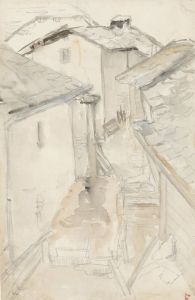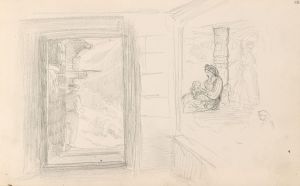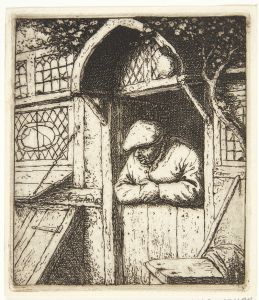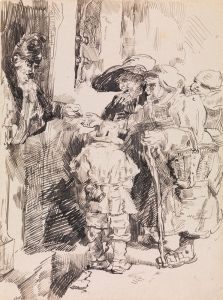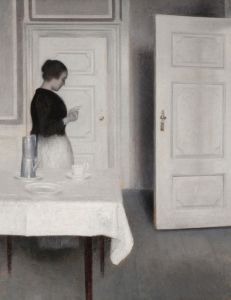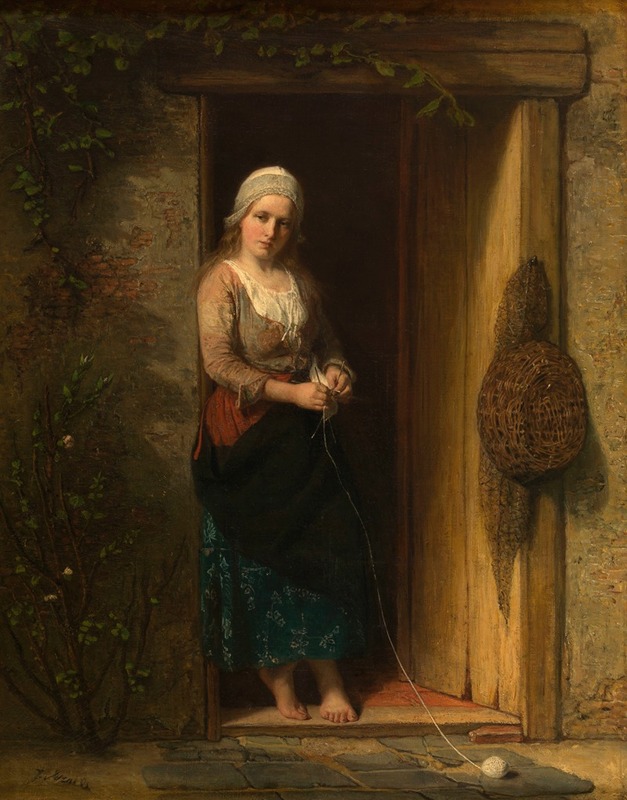
Ida, the Fisherman’s Daughter at the Doorway
A hand-painted replica of Jozef Israëls’s masterpiece Ida, the Fisherman’s Daughter at the Doorway, meticulously crafted by professional artists to capture the true essence of the original. Each piece is created with museum-quality canvas and rare mineral pigments, carefully painted by experienced artists with delicate brushstrokes and rich, layered colors to perfectly recreate the texture of the original artwork. Unlike machine-printed reproductions, this hand-painted version brings the painting to life, infused with the artist’s emotions and skill in every stroke. Whether for personal collection or home decoration, it instantly elevates the artistic atmosphere of any space.
Jozef Israëls, a prominent Dutch painter associated with the Hague School, created the painting "Ida, the Fisherman’s Daughter at the Doorway" in the 19th century. Israëls is renowned for his realistic and emotive portrayals of rural and working-class life, often focusing on the lives of fishermen and their families. His works are characterized by their somber tones and empathetic depiction of human subjects, reflecting the hardships and dignity of everyday life.
"Ida, the Fisherman’s Daughter at the Doorway" exemplifies Israëls' mastery in capturing the essence of his subjects with sensitivity and depth. The painting portrays a young girl, presumably named Ida, standing at the doorway of a modest dwelling. The setting suggests a coastal environment, typical of the fishing communities that Israëls frequently depicted. The composition of the painting draws the viewer's attention to Ida, who stands as a central figure, her expression and posture conveying a sense of introspection or anticipation.
Israëls' use of light and shadow in the painting is notable, as it enhances the emotional impact of the scene. The light, possibly coming from the outside, softly illuminates Ida's face and figure, creating a contrast with the darker interior of the house. This technique not only highlights Ida as the focal point of the painting but also adds a layer of narrative, suggesting a world beyond the doorway that is both inviting and uncertain.
The painting is a testament to Israëls' ability to convey complex emotions and stories through simple yet powerful imagery. His attention to detail, from the texture of Ida's clothing to the weathered appearance of the doorway, adds authenticity to the scene and invites viewers to contemplate the life and experiences of the young girl. Israëls' work often reflects themes of solitude, resilience, and the passage of time, and "Ida, the Fisherman’s Daughter at the Doorway" is no exception.
Jozef Israëls was influenced by the Realist movement and the works of earlier Dutch masters, which is evident in his focus on everyday subjects and his meticulous approach to capturing the nuances of light and atmosphere. His paintings, including this one, often evoke a sense of empathy and connection with the subjects, encouraging viewers to reflect on the universal aspects of human experience.
"Ida, the Fisherman’s Daughter at the Doorway" is part of Israëls' broader body of work that highlights the lives of the Dutch fishing communities. Through his art, Israëls not only documented the social realities of his time but also elevated the status of his subjects, portraying them with dignity and respect. His contributions to art have left a lasting impact, influencing subsequent generations of artists and solidifying his place in the history of Dutch painting.
Overall, "Ida, the Fisherman’s Daughter at the Doorway" is a poignant example of Jozef Israëls' artistic vision and his commitment to portraying the human condition with honesty and compassion. The painting continues to be appreciated for its emotional depth and technical excellence, resonating with audiences who find beauty and meaning in its quiet, contemplative scene.











